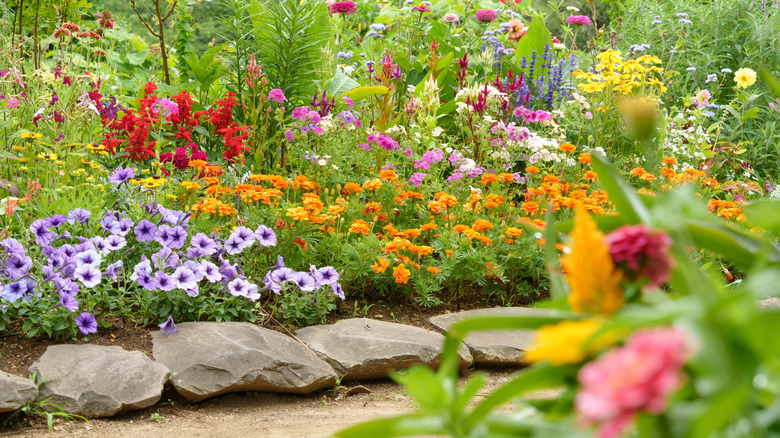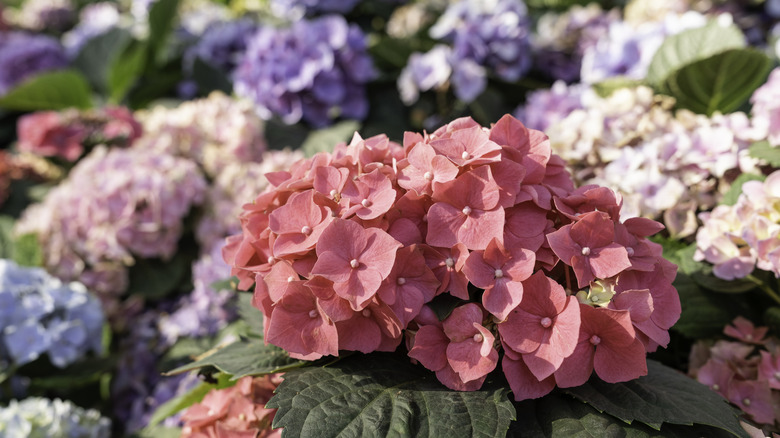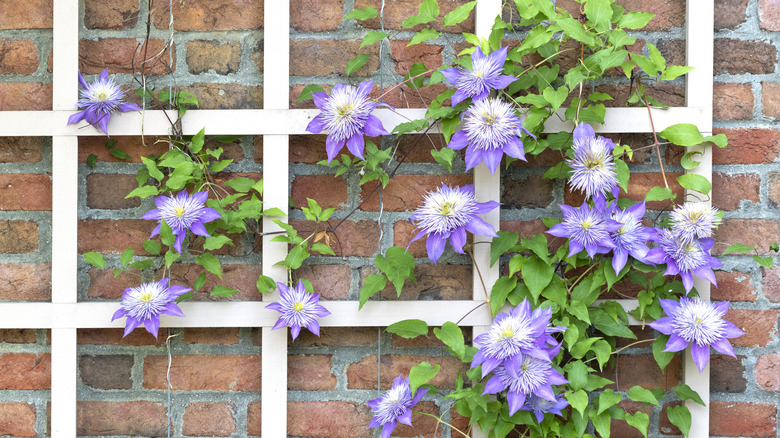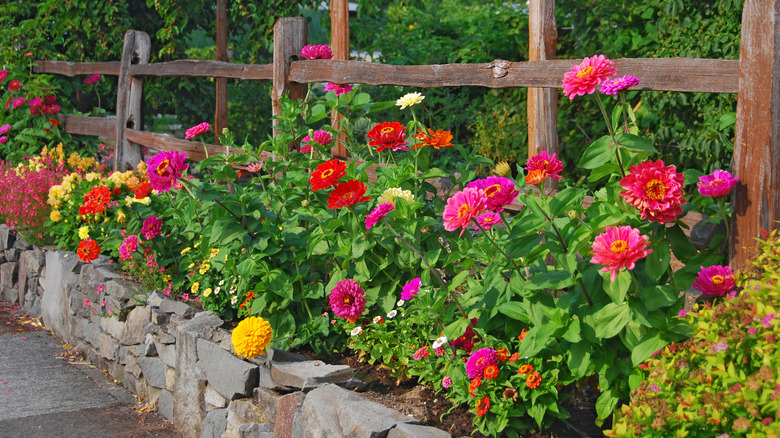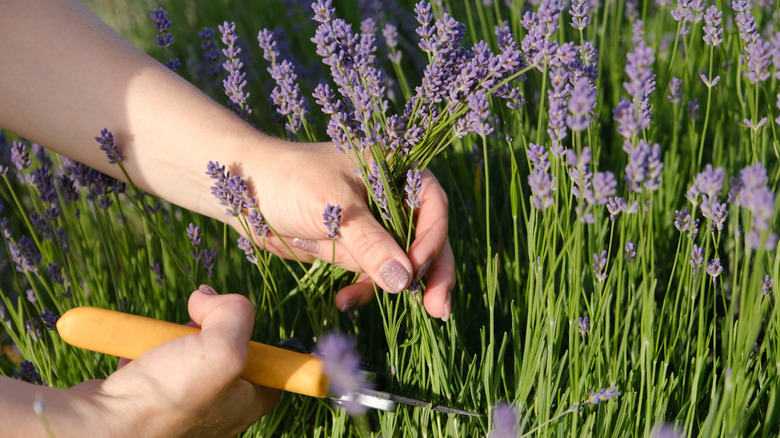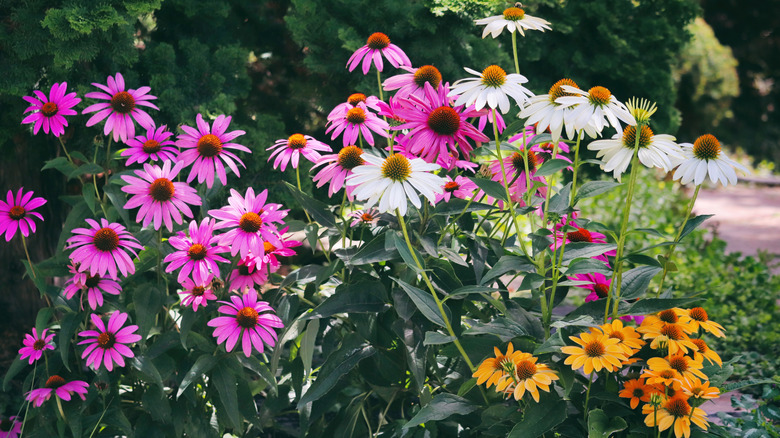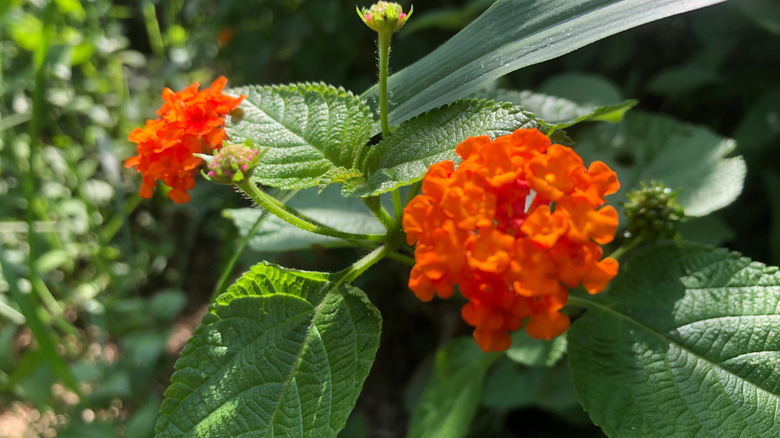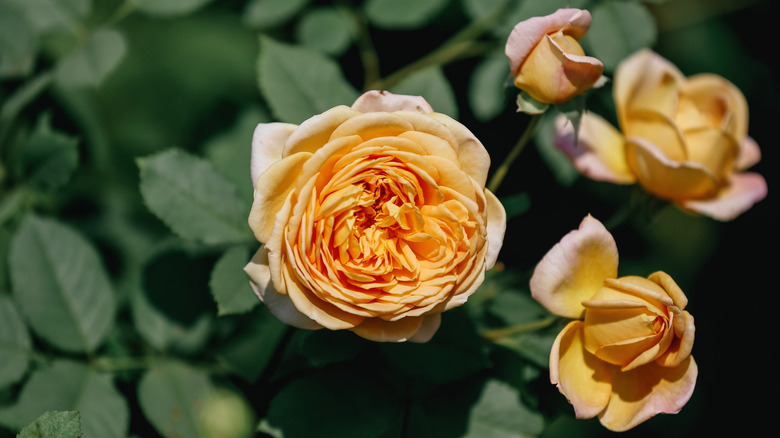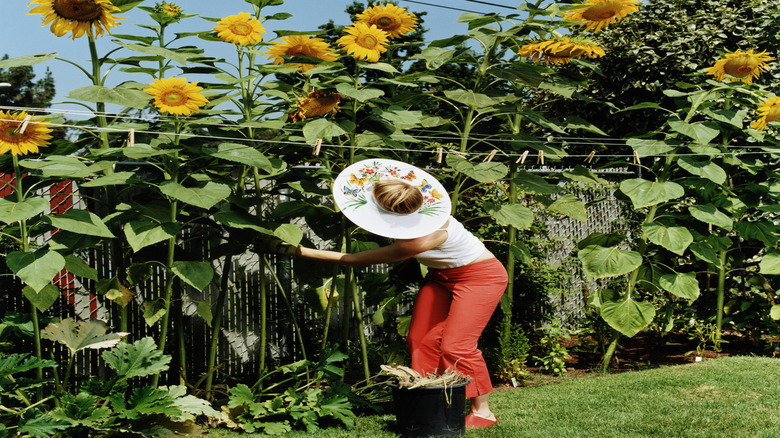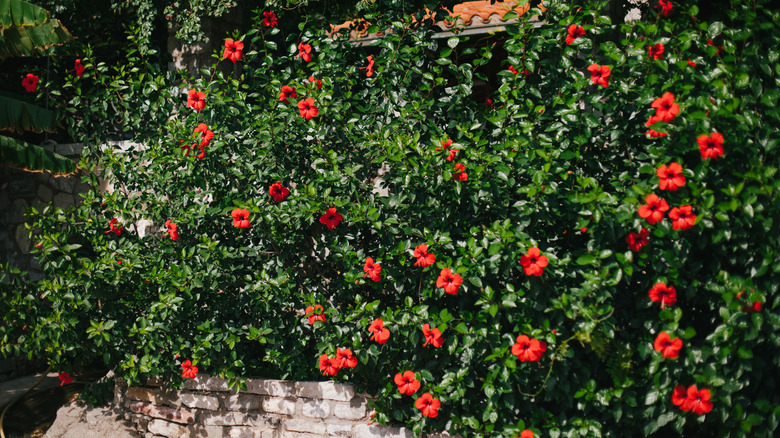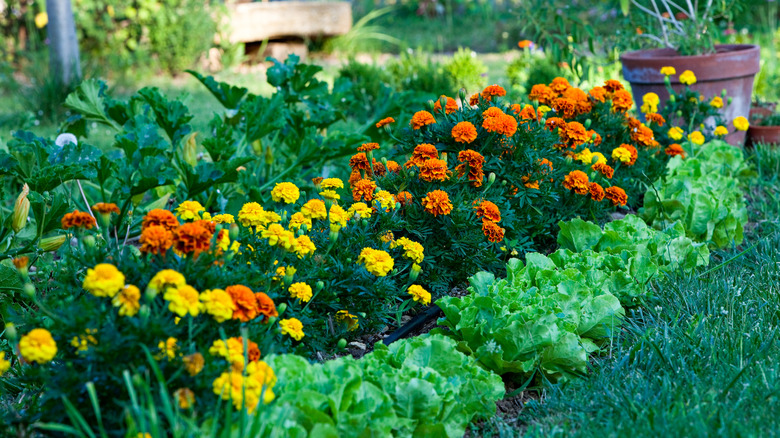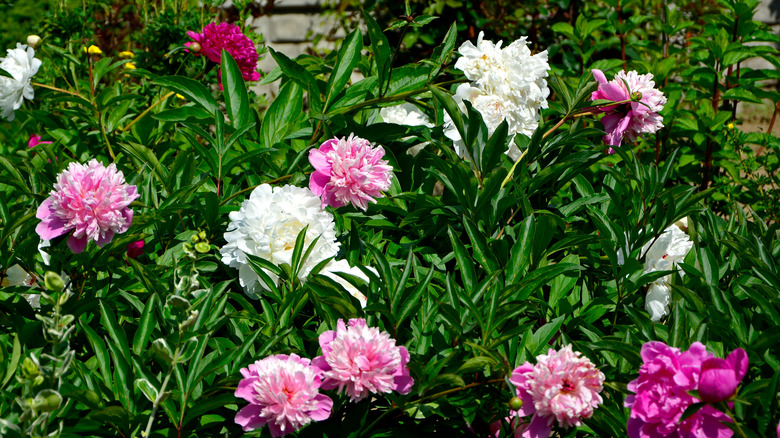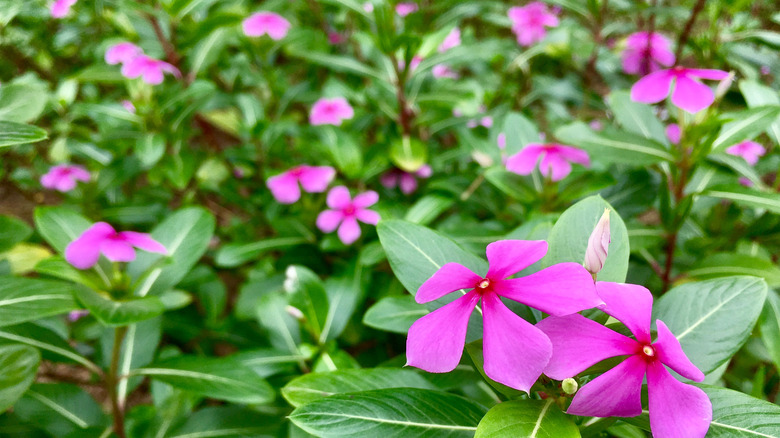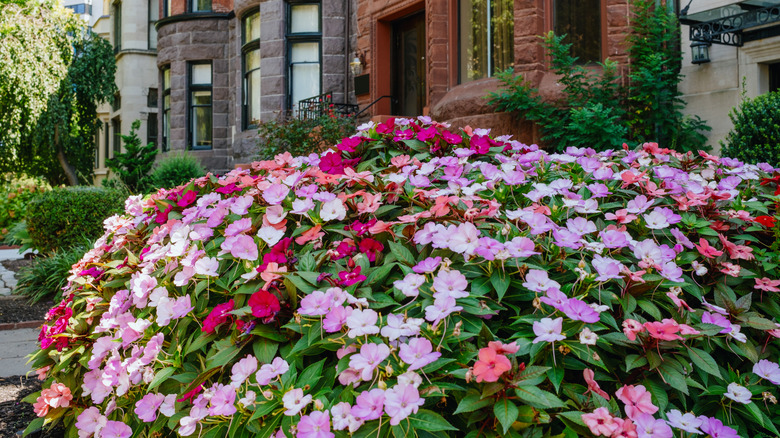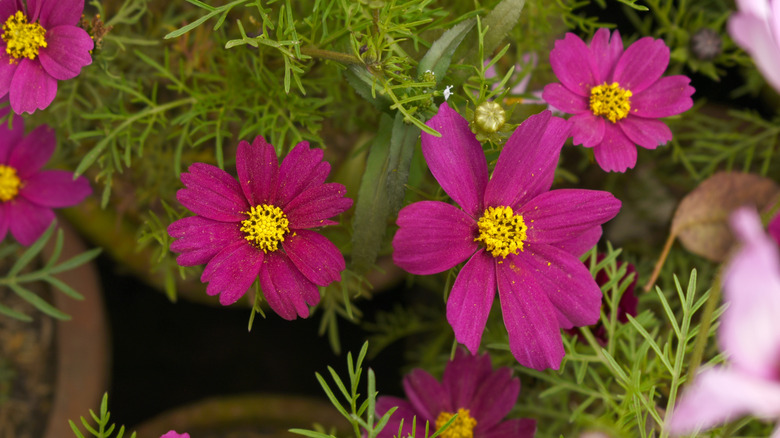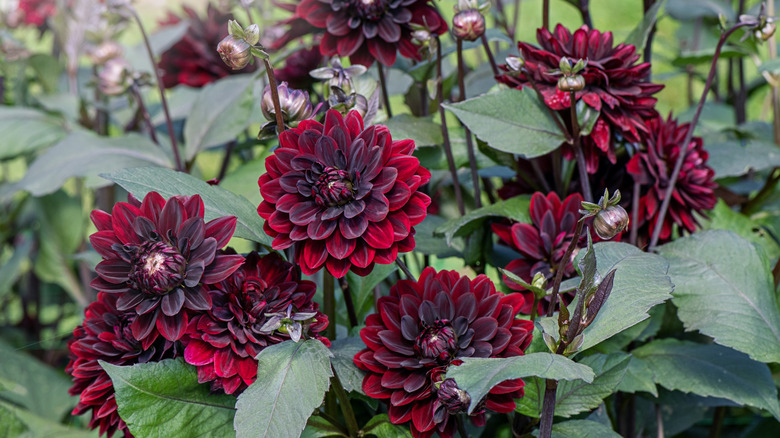15 Flowers To Plant In May For Beautiful Blooms All Summer Long
Spring is the time to start setting up your garden. In the early months of the year, you can plan out what you want to grow and when, but once spring rolls around, it's time to get started. While having herbs and vegetables in your yard is good, nothing can quite replace the beauty of a flower. If you enjoy being in the presence of vibrant blooms and watching hummingbirds and butterflies buzz around your yard, you want to carefully choose the best and brightest plants sure to draw your gaze — and various pollinators.
There are many flowers you can plant in May, each with a different appearance. You can find bright plants that look and smell amazing, or pick a species with a secondary purpose around your home and garden. Many of the most popular flowers, including roses, dahlias, cosmos, and lavender, are great examples of plants to start growing in May for beautiful blooms all summer long.
Though plenty of research went into ensuring that each of the flowers in our lineup does well when planted in May, it's always a good idea to double-check. Growing times for plants change based on what USDA growing zone you're in; a species that's well-suited for May planting in one region may not do so well in another. So, if you see a plant you like, do a bit of research to see whether it should actually be planted in your location in May.
Zones 3 and 4 are perfect for a May planting of hydrangeas
Hydrangeas (Hydrangea spp.) are beautiful flowering shrubs that are a classic garden choice if you want a field of bright colors in the yard. You can find them in shades ranging from bright pinks and whites to blues and purples, and they grow in USDA zones 3 through 9, depending on the species, though zones above 4 do better when planted in April. Transplant hydrangeas into your garden in May. Buying plugs is better than starting from seed, since they can take a few years to bloom.
Clematis can be planted as late as May for zones 4 and 5
Clematis (Clematis spp.) are a great option in a garden, as a single plant can produce dozens of bright flowers that come in colors like red, white, and purple. If you want to try planting this unique flower, make sure you read up on everything you should know about clematis before planting. Most grow in zones 4 through 9, but some are a little more tolerant of additional climates. When it comes to planting, clematis in zones 4 and 5 should be planted in May, after the last frost.
Zinnias should be planted in May for zones 2 through 6
These annual flowers are great to plant in May. Zinnias (Zinnia spp.) are gorgeous plants perfect for bringing in pollinators like butterflies. There are so many varieties so you can be sure to find one that looks right at home in your garden. Each option comes with different shapes and number of petals. They also come in almost any flower color you can imagine. They can grow in zones 2 through 11, but don't like very cold temperatures and should be planted after the last frost.
For those in zones 5 and 6, wait until May to plant your lavender
One flower perfect for almost any region of the United States is lavender (Lavandula spp.). It's listed as hardy in zones 5 through 9, but there are reports of it thriving in other areas of the United States as well. It is best planted between March and May, after the first frost. Lavender is such a handy plant to grow as it doesn't only look lovely all summer long, but it also works in food and tea. Additionally, its scent is said to help reduce anxiety and stress.
Coneflowers in zones 3 through 6 can wait until sometime in May to be planted
Coneflowers (Echinacea spp.) are perennial flowers that you can plant once and enjoy the benefits for multiple years. Choose from one of the stunning varieties of coneflower you could be growing in your garden and get pops of reds, yellows, and pinks wherever they bloom. In states like Colorado, coneflowers are usually planted in May. When you plant them in the spring, you can leave out the seed heads and bring in all the local birds in the fall. It's hardy in zones 3 through 9.
Lantanas can be planted before or during May in zones 7 through 11
Lantanas (Lantana spp.) are adorable clusters of small, colorful flowers. One plant may have two to three colors in one cluster. In zones 8 to 11, these flowers do best when planted sometime in spring. The last frost is early in these zones, so you can plant as early as March, or as late as May without a problem. They don't do well with cold temperatures, which is why they're only hardy to zone 7. These plants do a great job bringing in pollinators, including hummingbirds and butterflies.
Roses should be planted in May for any zone, depending on the kind
Roses (Rosa spp.) are a classic flower. In fact, there are species of roses that work in almost any zone in the United States. Depending on your location, you can plant these flowers at almost any point of the year, depending on if you're planting the bare roots or a potted plant. However, May can be a great option , as bare roots can be planted before the last frost in lower zones, and transplanted roses want to avoid the heat of the summer in higher zones.
Start your sunflowers in May from zone 4 through 9
Sunflowers (Helianthus spp.) can be planted in May. These bright and beautiful flowers are the perfect accompaniment to summer in zones 4 through 9. You can plant them after the last frost and once the soil is about 60 degrees Fahrenheit consistently. However, sunflowers have one small problem. Depending on what species you grow, they don't last very long. These are short burst flowers, so they sprout up tall and fast, sometimes only lasting a few weeks before they die off, meaning you may have to plant them a few times.
Native hibiscus can be planted up to the end of May
Hibiscus (Hibiscus spp.) are large flowers that come in shades of pinks and reds primarily, though they can be yellow or white as well. There are two options for hibiscus plants: native and nonnative. The ones found naturally in the United States can handle zones 4 through 9 pretty well. However, nonnative species are generally more tropical and are limited to zones 9 to 12. It is planted in late spring or early summer, so May is a perfect month to get started.
Marigolds in zones 2 through 6 should be planted in May right after a frost
Marigolds (Tagetes spp.) can be grown any time in the spring, including May. They come in shades of red, orange, yellow, and white. The most common species are the African marigolds with big orange or yellow flower heads and the more open yellow and red French marigolds. African marigolds take a longer time to grow, however, and should be planted immediately after a frost. Additionally, growing marigolds is easy if you avoid these common mistakes. They grow in most of the U.S., from zones 2 to 11.
Peonies can handle May planting in zones 4 through 9
Peonies (Paeonia spp.) are another plant you can start in May. Peonies can handle colder temperatures, so they can be planted before the last frost, though they can also be planted after, just to make sure they have the best chance. They thrive well in zones 4 through 9. These plants don't only provide you beauty for one season, either. Some peonies have been known to grow back even after 50 years. Some peonies, like bareroot varieties, can handle frost and may be planted up to three weeks before your last frost.
Plant your periwinkles in May in zones 4 through 9
Periwinkles (Vinca spp.) are perfect to plant between March and May. As its name suggests, it produces an abundance of periwinkle-colored flowers. Originally, periwinkle came from the Mediterranean Basin and parts of southern Switzerland. It grows in zones 4 through 9, sometimes perhaps a little too well. It can quickly take over if not carefully maintained or kept in planters, which is why you want to be cautious before planting periwinkle. However, they are quick to die from frost so they need to be planted once it warms up.
Impatiens in zones 10 and above can be planted in May before temperatures get too hot
There aren't many flowers that create as bold of a statement as Impatiens (Impatiens spp.). These bright and beautiful plants bloom throughout the season, giving you constant bursts of fresh flowers to enjoy. Most prefer full shade, but they can tolerate a little sunshine in the morning. However, if you have a garden that gets a lot of sun, there are some species like Impatiens hawkeri, able to tolerate full sun. Most varieties can't handle any type of frost.
For every zone except 1, cosmos can be planted as late as May
Cosmos (Cosmos spp.) are a perfect May plant, going in the soil right after the last frost of the season is over. They are a durable flower that can handle a range of soil conditions and bring in all sorts of pollinators. Cosmos are hardy in most of the United States, from zones 2 to 11. There is so much variety between species of cosmos. There are flowers with petals of all different sizes, shapes, and colors to choose from.
Dahlias should be planted no sooner than May in zones 3 to 7
Dahlias (Dahlia spp.) are a part of the aster family. They come in colors like pinks, creams, and reds, but there are also a few darker varieties that add a surprising contrast to your garden. Dahlias should be planted shortly after the last frost to get the most out of them. They are hardy in zones 8 to 10, but can grow up to zone 3 as annuals. Make sure you learn everything you need to know about dahlias before planting.
